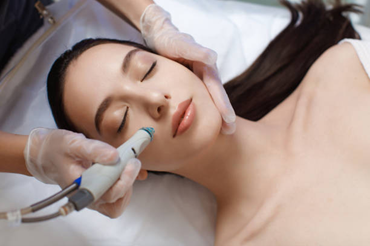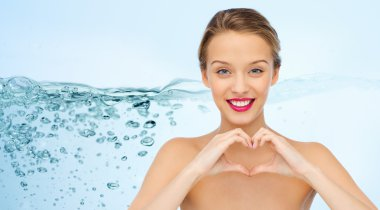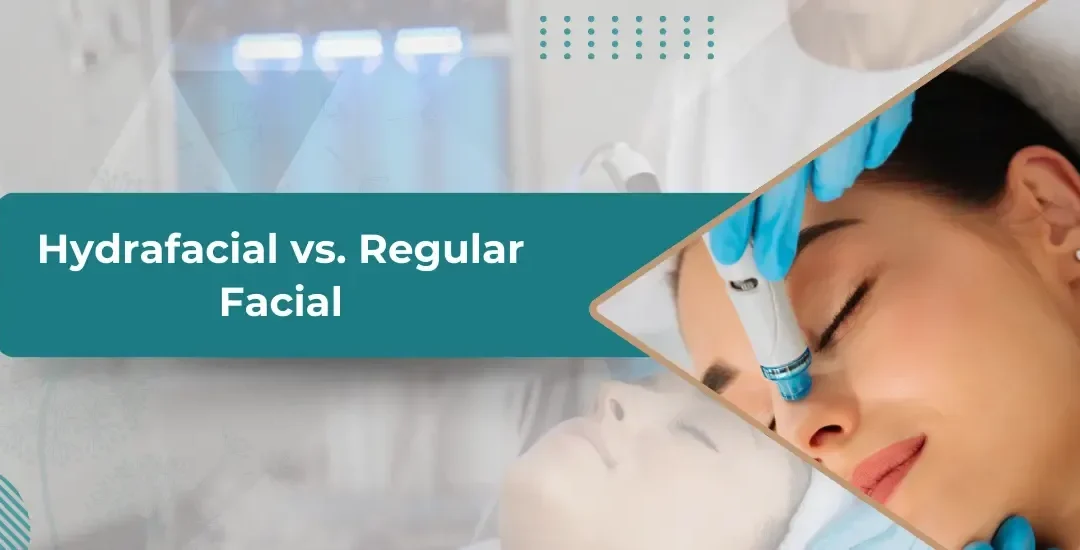Hydrafacial vs. Regular Facial: Choosing the Right Treatment for Your Skin

Our appearance is significant in how we feel about ourselves and how others perceive us. Clear, glowing skin can reflect a balanced lifestyle, good health, and self-care, making skincare an essential part of many routines. Dr. Swetha, Founder of Cosmoderm Centre, a top skin clinic in Indiranagar, notes, “With advancements in skincare technology, more people are turning to treatments that can deliver deeper, lasting results beyond the traditional facial.”
Do you want to feel more confident in your skin? Consult a qualified dermatologist today and learn about the best treatment options.
What is a Regular Facial?

Exploring home remedies for your healthy and glowing skin can be a great foundation in your skincare routine. Additionally, a regular facial is a classic skincare treatment aimed at cleansing, exfoliating, and nourishing the skin to promote a clear, well-hydrated complexion.
This process is often tailored to the client’s skin type—whether oily, dry, sensitive, or combination. Steps typically include:
Cleansing: A gentle cleanser removes dirt, oil, and makeup, prepping the skin for the next steps.
Exfoliation: This step helps remove dead skin cells, often using either a scrub or an enzyme-based exfoliator, leaving the skin smooth.
Extraction: This step clears blackheads and whiteheads for those with congested pores, though it can sometimes cause slight redness.
Hydrating Mask: A hydrating or calming mask is applied to rejuvenate and nourish the skin.
Moisturizing and SPF: The facial usually concludes with a moisturizer and sun protection, which help seal in hydration and protect against UV damage.
Regular facials have been a go-to for decades, offering essential skincare benefits that refresh the skin.
What is a Hydrafacial?

Dr. Swetha, a seasoned dermatologist in Indiranagar, explains, “Hydrafacial is designed to cleanse, extract, and hydrate the skin simultaneously. Unlike traditional facials, which rely on manual application, Hydrafacials are performed using an advanced machine that administers a series of steps through a unique wand.”
A Hydrafacial session typically involves:
Vortex Cleansing and Exfoliation: The wand’s suction and liquid combination gently cleanses while removing dead skin cells.
Acid Peel: A mild solution is applied to loosen dirt and impurities from pores without causing post-treatment peeling.
Extraction: A unique suction feature painlessly removes debris from pores, making it ideal for sensitive or acne-prone skin.
Hydration and Antioxidant Infusion: Finally, a serum packed with antioxidants, peptides, and hyaluronic acid is infused into the skin to hydrate and protect.
This multi-step process offers a gentle yet thorough treatment, achieving results that often leave the skin looking radiant immediately afterward.
Is Hydrafacial Better than Regular Facial?
Both Hydrafacials and regular facials provide benefits, but the Hydrafacial stands out for its advanced technology and efficiency. Here’s a look at why some may consider it a better option:
Enhanced Deep Cleansing: Hydrafacial’s machine-based suction ensures thorough pore cleansing with minimal irritation, unlike regular facials.
Customizable Solutions: Hydrafacial treatments can be tailored to address individual skin concerns, from fine lines to hyperpigmentation.
Immediate Glow: Infusing hydrating serums immediately leaves the skin radiant and smooth, making it ideal before special occasions.
No Downtime: While regular facials can sometimes leave skin red or sensitive, the Hydrafacial is gentle enough that most clients experience little to no downtime.
Bangalore’s distinguished skin and hair specialist Dr. Swetha, notes, “The Hydrafacial’s comprehensive approach offers more targeted results, making it a preferred choice for those seeking an effective, zero-downtime treatment.”
Difference Between Hydrafacial and Normal Facial
The differences between a Hydrafacial and a regular facial are due to technology, process, and results.
Technology: Regular facials rely on manual techniques, while the Hydrafacial uses advanced machinery with vortex fusion technology for a deeper, more thorough cleanse.
Time Efficiency: Both treatments take about 30–60 minutes; however, the Hydrafacial’s consistent use of the wand reduces the need for multiple tools or techniques.
Extraction Method: Traditional facials often use manual extraction, which can cause discomfort. In contrast, the Hydrafacial’s suction extraction is painless and effective.
Results Duration: Results from a regular facial last a few days. Hydrafacial results can extend for a week or more, with noticeable improvements in skin texture and tone.
In short, the Hydrafacial’s technology and method provide a more in-depth and comfortable experience than a traditional facial.
Wondering if a Hydrafacial could benefit your skin type? Visit a knowledgeable dermatologist to explore options tailored to your unique skincare needs.
Have you considered the potential side effects of Hydrafacial on sensitive skin? Let’s take a closer look.
Benefits of Hydrafacial vs. Regular Facial
Here’s a closer look at the distinct benefits of each treatment:
Hydrafacial Benefits:

- Instant results and immediate improvements in skin hydration, tone, and radiance
- Non-irritating exfoliation that is suitable for all skin types and minimizes discomfort, unlike some regular facials that may irritate sensitive skin
- Long-lasting effects, as with consistent sessions, Hydrafacial can improve the skin’s health, texture, and elasticity over time
Hydrafacial Benefits:

- Relaxation and pampering as traditional facials often include soothing massage, creating a calming experience
- Simple maintenance as regular facials can help maintain general skin health and balance, especially for those without specific skin issues
- Cost-effective and often more affordable for those looking for basic skin rejuvenation
Takeaway
Healthy, radiant skin enhances our appearance and reflects our dedication to self-care and well-being. Whether you prefer the time-tested benefits of a regular facial or the advanced approach of a Hydrafacial, achieving healthier, glowing skin has never been more accessible.
- A Hydrafacial may be ideal if you’re looking for a glow before an event or want a more intensive skincare session.
- A regular facial
- could be a better option if your goal is to refresh your skin and relax.
Dr. Swetha, an experienced dermatologist in Indiranagar, notes, “Every skin type responds differently to treatments. The choice between regular facial vs Hydrafacial ultimately depends on your skin’s unique needs and skincare goals.”
Let’s dive into the most frequently asked questions to help you make an informed choice!
Frequently asked questions
Can Hydrafacial be combined with a regular facial?
How frequently can I get a Hydrafacial?
Can I get a Hydrafacial if I have sensitive skin?
What are the disadvantages of Hydrafacials?
Here are a few disadvantages to consider:
- Mild redness, sensitivity, or tightness may occur temporarily, especially in sensitive skin.
- Higher cost than regular facials due to advanced technology and specialized serums.
- Not ideal for severe acne, active rashes, or conditions like rosacea, as it may worsen symptoms.
- Risk of over-exfoliation if treatments are done too frequently, possibly causing dryness or irritation.
- Potential for rare allergic reactions to the serums; pre-treatment consultation is recommended.
- Short-term results (about a week); regular sessions needed for sustained effects.
Can regular facials address specific skin concerns like acne or hyperpigmentation?
What’s the cost difference between Hydrafacial and regular facials?
Disclaimer: The information shared in this content is for educational purposes only and not for promotional use.
Reference Links:


